Adoption from Ukraine
Adopting from Ukraine
“When a country is in the midst of war, it is natural for families to want to open their hearts to these children either through adoption or hosting. The desire to provide a home and family to these children reflects the best intentions and sincere desire to help. However, adoption is only a possibility for children for whom parental rights have been terminated or for whom there is clear evidence that they are orphaned.” – National Council for Adoption
As of March 2025, Ukraine is processing adoptions only for the following scenarios under Decree No. 576 [Article 135].
- Persons adopting a biological sibling (full or half-sibling) of a previously adopted child;
- Relatives of the prospective adoptive child [see the Civil Code of Ukraine, Articles 1262-63 and 1265 to understand who qualifies as a relative]; or
- Persons adopting their spouse’s child (stepparent adoption).
The below information is shared as a general guideline only and subject to change if and when Ukraine fully resumes intercountry adoptions after the end of the war and after the end of martial law in the country.
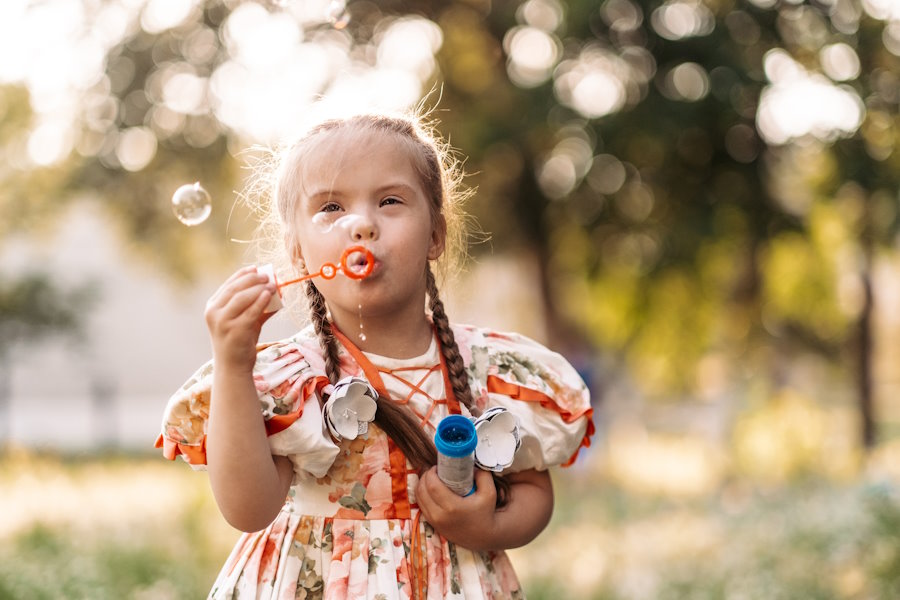
Country of Ukraine Adoption
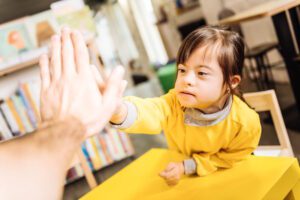 Hopscotch Adoption has recently added a Ukraine program which assists in the placement of Ukrainian children from 6 to 18 years old. Referrals are made by the Ministry of Social Policy of Ukraine with couples traveling to Kyiv, Ukraine for an assigned referral appointment. If an adoptive couple is requesting the referral of a child that they previously hosted, it is highly likely that the Ministry of Social Policy of Ukraine will agree to give that child’s referral to the couple. If a couple is requesting a “blind” referral at their referral appointment, the Ministry of Social Policy of Ukraine does its best to offer children with the couple criteria, but sometimes the couple has to return to the Ministry of Social Policy for up to three appointments to get the child/ren who is right for them. Children abandoned or removed from their home must remain on a government registry for a period of twelve months. Eligible Ukrainian children reside in orphanages and boarding schools where the care is noted as good.
Hopscotch Adoption has recently added a Ukraine program which assists in the placement of Ukrainian children from 6 to 18 years old. Referrals are made by the Ministry of Social Policy of Ukraine with couples traveling to Kyiv, Ukraine for an assigned referral appointment. If an adoptive couple is requesting the referral of a child that they previously hosted, it is highly likely that the Ministry of Social Policy of Ukraine will agree to give that child’s referral to the couple. If a couple is requesting a “blind” referral at their referral appointment, the Ministry of Social Policy of Ukraine does its best to offer children with the couple criteria, but sometimes the couple has to return to the Ministry of Social Policy for up to three appointments to get the child/ren who is right for them. Children abandoned or removed from their home must remain on a government registry for a period of twelve months. Eligible Ukrainian children reside in orphanages and boarding schools where the care is noted as good.
Medical and health risks to be aware of include cardiovascular disease, cancer, chronic respiratory disease, and diabetes. There is also a concern with harmful use of alcohol, tobacco, high blood pressure, exposure to pollution and obesity.
Eligible Applicants
 Married heterosexual couples of any heritage or mainstream faith are eligible to adopt. There are no restrictions on applicant family size. At least one spouse has to be a minimum of 15 years older than the adoptive child. While there is no law requiring a specific income for an applicant family, the prospective adoptive father has to be employed and the household income must meet or exceed of 125% of federal poverty guidelines published annually by the Department of Homeland Security.
Married heterosexual couples of any heritage or mainstream faith are eligible to adopt. There are no restrictions on applicant family size. At least one spouse has to be a minimum of 15 years older than the adoptive child. While there is no law requiring a specific income for an applicant family, the prospective adoptive father has to be employed and the household income must meet or exceed of 125% of federal poverty guidelines published annually by the Department of Homeland Security.
Eligible Children
Children from infancy to teen with a variety of medical and/or developmental diagnoses are cleared for intercountry adoption from Ukraine. In addition, relatively healthy children ages 6 and up can be referred to foreign adopters. This program is popular among families wishing to adopt a young child who has Down Syndrome or single children/ sibling groups, usually over the age of 10, that are relatively healthy.
Program & Process
Once an approved family has contracted into our Ukraine program, we will guide the prospective adoptive parents toward a Hague-accredited home study agency in their state of residence and provide information on the dossier. Upon collection of the required documents, including a finalized home study and USCIS I-600A approval, the completed dossier is sent to Ukraine and translated into Ukrainian. The dossier is hand-delivered to the Ministry of Social Policy, Ukraine’s Adoption Authority. The dossier approval and the assignment of your personal appointment takes roughly 6-8 weeks.
Families will be met at the airport by a member of our English speaking in-country team, and will reside in a private apartment. Prospective adoptive parents will be assisted every step of the way with an English-speaking representative. In-country services include a private apartment, transportation, and translator. All necessary appointments are made on the family’s behalf. Sightseeing is optional, but we hope you take full advantage of coming to know and love Ukraine.
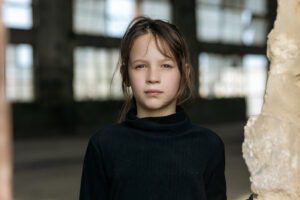
Once the Ministry of Social Policy has issued an appointment typically with two to three weeks’ notice, both prospective adoptive parents must travel to Ukraine to attend the appointment in Kyiv. There are two categories that prospective adoptive families generally fit into – those who have hosted a Ukrainian child and those who are going to adopt an unknown child who will be presented to them at this appointment. If in the former category, the Ministry will usually have this child’s folder ready to view before referral acceptance. If in the latter category, families are introduced to two or three children meeting their approval parameters and must then decide which child to pursue. The following day families return to the Ministry of Social Policy of Ukraine to pick up the letter of permission specific to the child whose referral was accepted.
Next, families travel to the child’s region and meet/interact with the child before committing to proceeding with the adoption. There is two to three more days’ worth of paperwork and then families fly home to wait for the court appointment. Alternately, you can opt to remain in Ukraine until the court date takes place. During this wait time, families are required to have their child’s referral information evaluated by a US adoption medical specialist and share the assessment with Hopscotch as well as participate in a mandatory referral counseling call with a Hopscotch social worker.
If prospective parents decide to decline the referral after meeting the child, they will return to Kyiv to wait a couple of days for another appointment to select a new referral. The Ministry of Social Policy of Ukraine permits three appointments per family.
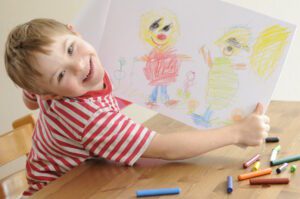
Court is typically scheduled 3 to 3.5 weeks after acceptance of a referral. Both husband and wife are required to attend the court hearing. After the court hearing, both prospective adoptive parents can fly home, if desired, to wait for the ten day appeal period to pass or one spouse can return home while the other remains in Ukraine. After the appeal period has ended, the court decree and the birth certificate with the child’s new name are obtained. Families then travel to pick up their new child/ren from their current place of residence before the child’s Ukrainian passport is ordered in Kyiv. Passport processing times are usually just a few days. While in Kyiv, families will be also completing the child’s medical exam required by the American Embassy requires and filing I-600 with the US embassy. The last couple of days in Ukraine are spent obtaining the US visa to allow the child to enter the United States.
Post-Adoption
Once a family returns to the US, the adoption must be finalized by a court in the family’s state of residence which will then recognize the child as a US citizen. Two post adoption reports conducted by a social worker are required at minimum, with additional ones possibly being requested by the home study agency, state law and/or Hopscotch. Family -generated reports are required until the child turns 18 based on Ukrainian law.
Post Adoption Report (PDF)
Department of State’s Case Data Verification Form
The Country
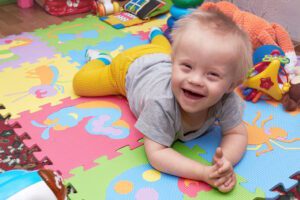
Ukraine is the second largest country in Europe, after Russia. Ukraine’s capital is Kyiv. Ukraine shares borders with Moldova, Romania, Hungary
Almost all of Ukraine is flat. The grassland that covers the central and southern parts of the country is called the steppe. In northern Ukraine are the Pripet Marshes, one of the largest wetlands in Europe. The Carpathian Mountains rise in the west. The Crimean Mountains cross the Crimean Peninsula, a piece of land that extends south into the Black Sea. Ukraine’s longest river is the Dnieper. Most of Ukraine has warm summers and cold winters. It rains mainly in June and July.
Most of the people are Ukrainians. Russians form the next largest group. There are also small groups of Moldovans, Tatars, and Belarusians. Ukrainian is the main language. Most people live in cities or towns. About half of the population does not follow any religion. Most of the rest of the people follow the branch of Christianity known as Eastern Orthodoxy. A small number of people are Jewish.
Services account for the largest part of Ukraine’s economy. Included in the service sector are the areas of finance, trade, transportation, education, health care, government, and tourism. Manufacturing and mining are also important to Ukraine’s economy. Factories produce iron and steel, locomotives, tractors, chemicals, and other goods. Mines provide manganese, coal, iron ore, salt, sulfur, and other minerals. Ukraine also has reserves of natural gas and oil.
Farmers in Ukraine produce potatoes, sugar beets, wheat, barley, corn, rye, and oats. Farmers also raise cattle, pigs, sheep, and goats.
Healthcare in Ukraine is part of a universal health care system largely built up as a successor of the Soviet healthcare system otherwise dismantled in 1991. The Ministry of Healthcare implements the state policy in the country in the field of medicine and healthcare. Cardiovascular diseases, cancer, suicide, HIV/AIDS, and alcohol- and smoking-related diseases are major contributors to mortality in Ukraine, accounting for a large portion of deaths. The war is also contributing significantly to civilian casualties, including those from artillery fire and drone attacks. The war in Ukraine has had a devastating impact on children’s health, leading to increased rates of mental health issues, disruptions to essential services, and physical injuries, with many children experiencing trauma and displacement
Tribes of people called Slavs arrived in what is now Ukraine during the 400s and 500s. Viking invaders called Varangians later mixed with the Slavs. They set up a state that became the powerful kingdom of Kyivan Rus. Kyivan Rus lost power when Mongols invaded in the 1200s.In the 1300s Lithuania took control of most of Ukraine. Poland ruled most of Ukraine after 1569. The Poles made many Ukrainians into serfs, or farmers who had to work on land that they did not own. Some serfs escaped and joined a military force called the Cossacks. In 1648 the Cossacks led a fight against Polish rule. The Cossacks asked Russia to help them defeat the Poles. The Cossacks won independence from Poland, but their new state soon became part of the Russian Empire. In the 1700s Russia slowly gained control over almost all of Ukraine. By 1922 Ukraine had become part of the newly formed Soviet Union. The Soviets took over Ukraine’s farms. During the 1930s about five to seven million Ukrainians died from starvation. During World War II Germany invaded Ukraine. German forces made millions of Ukrainians into slaves and murdered about 600,000 Ukrainian Jews. The Soviets drove the Germans out of Ukraine in 1944. In 1991 the Soviet Union broke apart, and Ukraine became independent. In 2004 many Ukrainians protested the results of a presidential election. They thought the election had been unfair. The protests, known as the Orange Revolution, led to a new election. However, Ukraine’s political problems continued.
In March 2014 Russian troops invaded Crimea, a part of Ukraine. Soon after, Russian President Vladimir Putin claimed that the people in Crimea voted for independence from Ukraine. Putin then signed a treaty that made Crimea part of Russia. Most other countries and the United Nations condemned Russia’s actions. Tensions between Ukraine and Russia remained high. Later in 2014 rebels in two areas of eastern Ukraine fought against Ukraine troops. The rebels wanted to separate from the country. They were backed by Russian troops. The two areas declared themselves as independent republics, but they were not recognized by other countries. Fighting continued between the rebels and Ukrainian troops. Thousands of people were killed during the ongoing conflict. Tensions between Ukraine and Russia intensified in 2021 when Russia began building up troops along the border with Ukraine. Many people feared that Russia would invade Ukraine. On February 21, 2022, Putin officially recognized the separatist republics in eastern Ukraine and sent troops into the regions. Three days later Russia invaded Ukraine and began bombing cities and military targets. Leaders around the world condemned the attacks.
Fees
Contact Hopscotch Adoptions directly to request a fee schedule.
Recommended Reading
Twenty Things Adoptive Parents Need to Succeed by Sherrie Eldridge
The Connected Child by Karyn B. Purvis, David R. Cross and Wendy Lyons Sunshine
46 Days in Ukraine: A Spectator’s Guide to Adoption by Basil Pallis
In Search of a Family: A Story of an International Adoption by Kevin Carlisle, Ginger Carlisle, Johanna Carlisle
Ukraine Adoption: How we did it – How you can too by Michael Joseph Redman
76 Days on Mars: A Ukrainian Adoption Tale by Michael Redman
Ukrainian Plus Russian Phrases for Children – An Adoption Language Tool for English Speaking Parents by Fred Des Chenes
Until We All Come Home: A Harrowing Journey, a Mother’s Courage, a Race to Freedom Hardcover by Kim de Blecourt